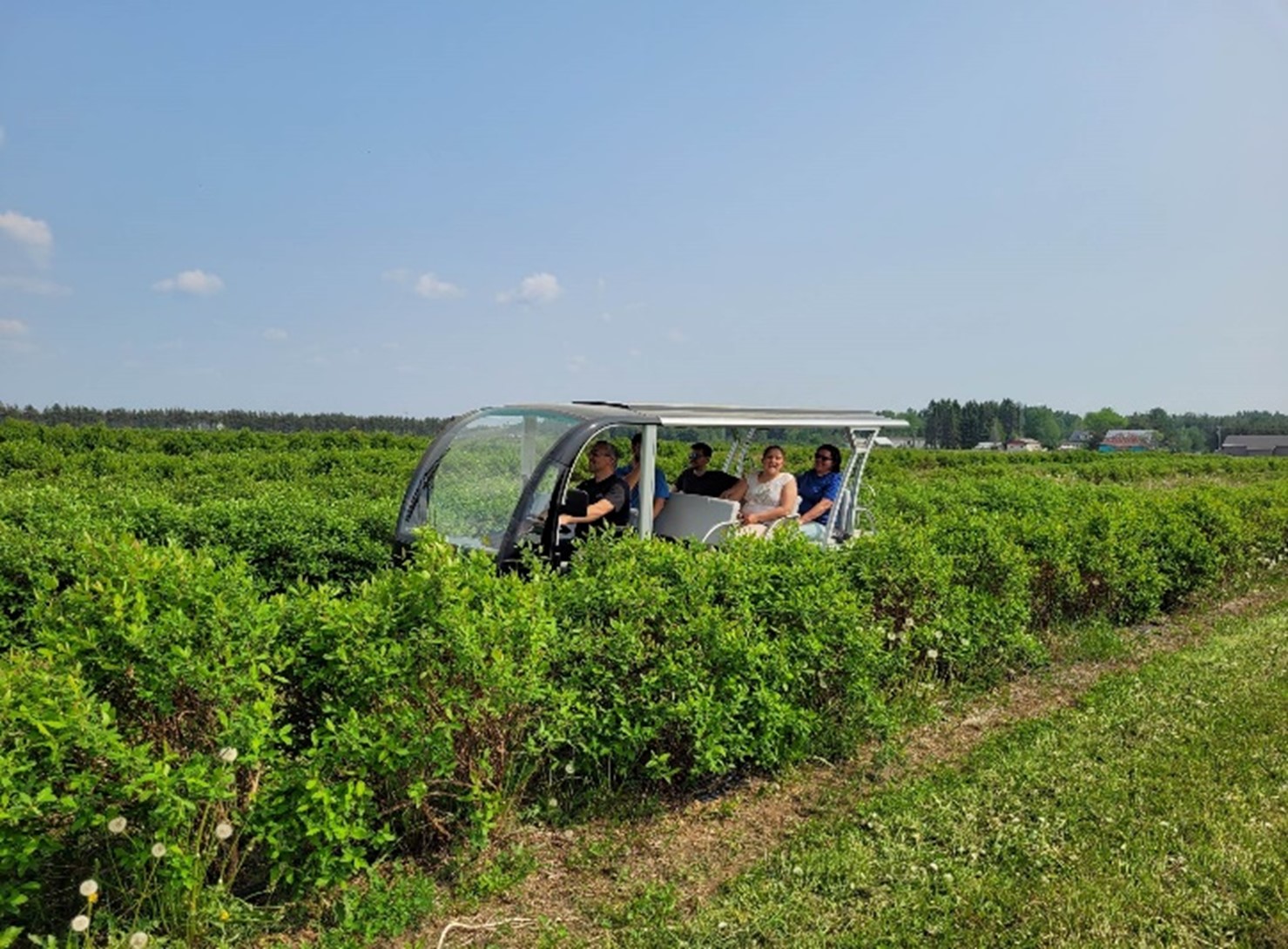
Camerises Mistouk: From field to museum
Find out how this family-run business based in Lac-Saint-Jean became the largest producer of haskap berries in Quebec.
From: DEC - August 11, 2023
Summary |
|---|
|
Organization: Camerises Mistouk This CED support has enabled: the business to open a haskap berry economuseum and to construct a reception building, while also adopting ecofriendly practices. This new building is a space to showcase and provide interpretation on the haskap berry in Quebec, in addition to fostering the development of agri tourism in the region. |
A family business co-founded by Myriam Savard, Camerises Mistouk is the largest haskap berry producer in Quebec. This small boreal berry, with its many virtues, is the source of some great aspirations.

A passion is born
Ms. Savard, who is originally from Lac-Saint-Jean, affirms that the name of the business was not chosen by random! In fact, the name “Mistouk” has its origins in this region, in reference to Rivière Mistouk, which runs through Alma. It is a written variant of the Montagnais word mistik or mistuk, which means tree or stick or piece of wood, referring to the deadwood Rivière Mistouk carried along its 16 kilometres. It is a wonderful way to pay tribute to her region.
Myriam’s passion for the haskap berry dates back to 2014, with the planting of the first bushes. Today, the business has some 76,000 bushes, occupying 36 of its 80 hectares of land. And why the haskap berry? Myriam explains: “The craze for the haskap berry is really flourishing. This small emerging fruit is perfect for the region’s arid climate. And since everyone was already growing blueberries, my spouse Luc and I found it too easy. The haskap berry proved to be a logical, different choice!”
A family affair
In July 2020, Les Camerises du lac (owned by Ms. Savard and her spouse, Luc Lamontagne) and Camerises Mistouk (owned by Dominic Tremblay) combined their operations to create Camerises Mistouk as we know it today. The strengths of the two entities have been combined, making it possible to enter new markets with this small boreal fruit. Myriam is the Executive Director of this “new” business.Camerises Mistouk is mainly a family affair. The couple’s two children have always been involved in the business’s tasks, along with several family members of Myriam’s spouse.
“Without their support, it would be impossible for us to be where we are today. Farming is very difficult. We must work hard every day. But we must also work with Mother Nature, and this is even more difficult. We are a family business. We owe them a great deal,” she explains.
Promoting the haskap berry

With a desire to showcase this fabulous little fruit to enable as many people as possible to fall in love with it, the businesswoman solicited CED’s assistance for an economuseum project. The Haskap Cannery ÉCONOMUSÉE® opened on June 22, 2023. In a building at the heart of the plantation, visitors can deepen their knowledge of the haskap berry throughout the year, thanks to an interpretation portal and a video on harvesting, cleaning, processing, and freezing. In the summer, it is also possible to have a picnic and to camp onsite for one night, not to mention pick-your-own activities during harvest season.
Myriam has set herself the mission to promote the haskap berry outside Quebec. She hopes there will be many visitors this summer to the ÉCONOMUSÉE®. She is focusing, among other things, on different local products such as dressings, BBQ sauces, and jams to expand the reach of this boreal treasure!
Demystifying the haskap berry
The haskap bush (or Lonicera caerulea) is a shrub that can resist temperatures down to -47oC. Camerises Mistouk has nine varieties of haskap bushes, also called cultivars, and each one has a taste all its own. The bushes flower early, between mid-May and early June. Each plant gives about half a pound of fruit, depending on the variety. Myriam and her team harvest a bit by hand, but mainly with a harvester manufactured in Plessisville, the Pro-Berry. The harvest period extends over four to five weeks, beginning in mid-July.
A few ideas on how to use haskap berries in cooking: Spicy sauces that bring out the taste of cooked dishes; dressings; and haskap berry crumbles. On top of its good taste, the haskap berry is also a powerful antioxidant, more so than the cranberry, raspberry, or blueberry. It is also rich in vitamins C and A, fibre, and potassium; in short, it is a real superfruit!